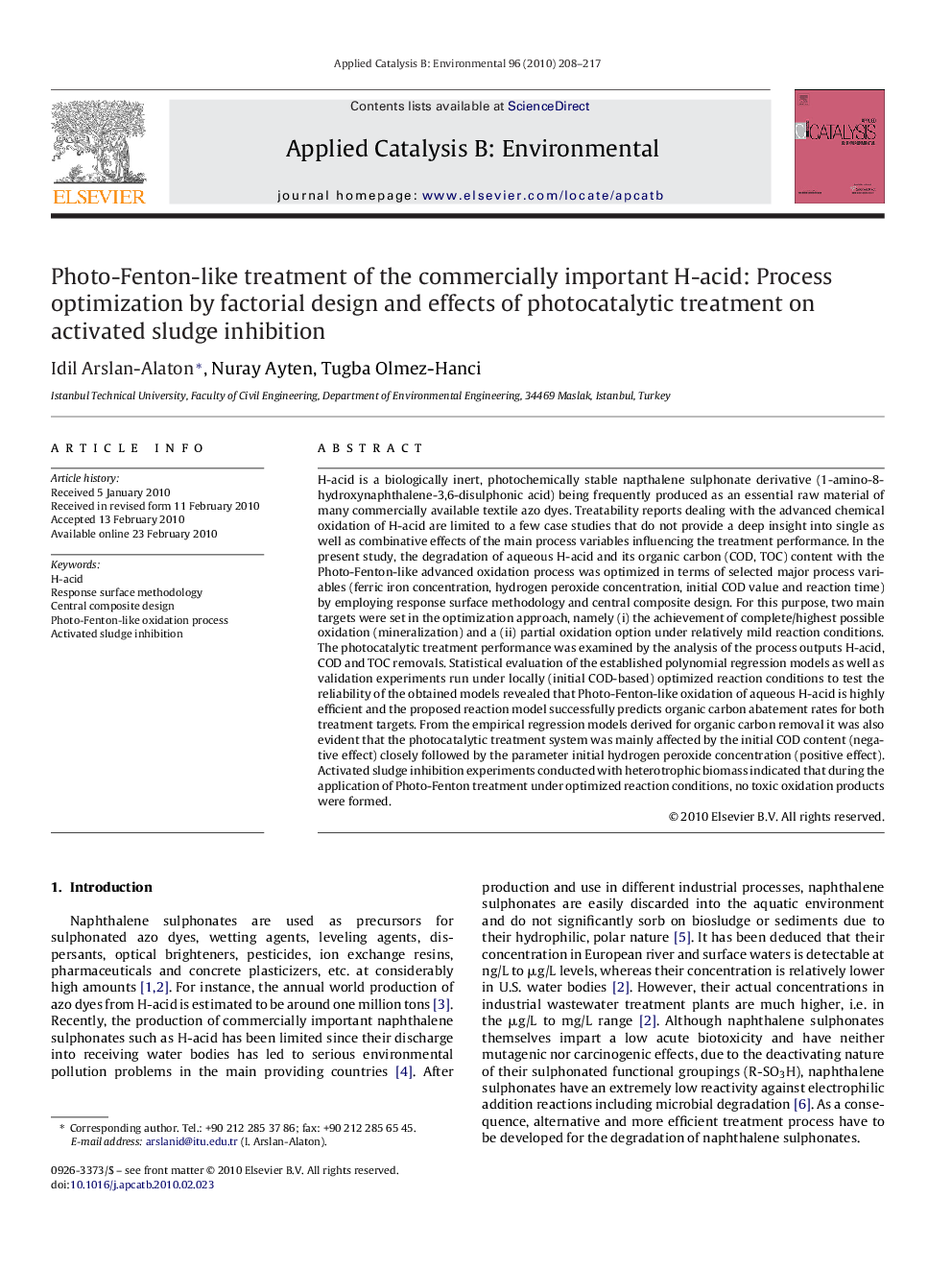| Article ID | Journal | Published Year | Pages | File Type |
|---|---|---|---|---|
| 47464 | Applied Catalysis B: Environmental | 2010 | 10 Pages |
H-acid is a biologically inert, photochemically stable napthalene sulphonate derivative (1-amino-8-hydroxynaphthalene-3,6-disulphonic acid) being frequently produced as an essential raw material of many commercially available textile azo dyes. Treatability reports dealing with the advanced chemical oxidation of H-acid are limited to a few case studies that do not provide a deep insight into single as well as combinative effects of the main process variables influencing the treatment performance. In the present study, the degradation of aqueous H-acid and its organic carbon (COD, TOC) content with the Photo-Fenton-like advanced oxidation process was optimized in terms of selected major process variables (ferric iron concentration, hydrogen peroxide concentration, initial COD value and reaction time) by employing response surface methodology and central composite design. For this purpose, two main targets were set in the optimization approach, namely (i) the achievement of complete/highest possible oxidation (mineralization) and a (ii) partial oxidation option under relatively mild reaction conditions. The photocatalytic treatment performance was examined by the analysis of the process outputs H-acid, COD and TOC removals. Statistical evaluation of the established polynomial regression models as well as validation experiments run under locally (initial COD-based) optimized reaction conditions to test the reliability of the obtained models revealed that Photo-Fenton-like oxidation of aqueous H-acid is highly efficient and the proposed reaction model successfully predicts organic carbon abatement rates for both treatment targets. From the empirical regression models derived for organic carbon removal it was also evident that the photocatalytic treatment system was mainly affected by the initial COD content (negative effect) closely followed by the parameter initial hydrogen peroxide concentration (positive effect). Activated sludge inhibition experiments conducted with heterotrophic biomass indicated that during the application of Photo-Fenton treatment under optimized reaction conditions, no toxic oxidation products were formed.
